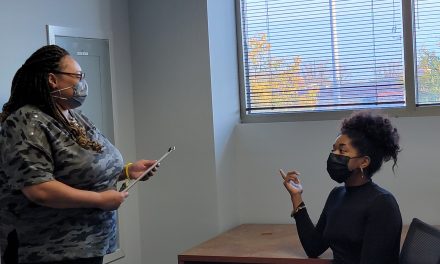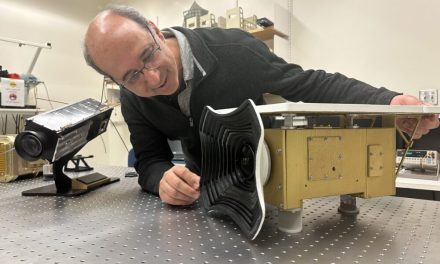By Megan Poinski
Megan@MarylandReporter.com
Sen. James Brochin says he spent nine months driving through a section of the Baltimore Beltway in his Towson district with a speed camera in a work zone that had no workers.
He’s sponsoring a bill to require that cameras be used only when workers are present.
Brochin, D-Baltimore County, Tuesday showed the Judicial Proceedings Committee photographs of a section of I-695 close to the Charles Street exit. There is no construction – except on a bridge high above the roadway – and a wall constructed to protect a truck with a speed camera mounted on it. Brochin asked several times if anyone could locate the construction.
“This is a total unabashed money grab,” Brochin said.
Supports speed cameras with workers present
Brochin said that he fully supports using speed cameras to get motorists to slow down and drive more carefully around workers. However, he said, when there are no workers, and when there are no signs of construction that make it difficult to drive on a section of the road, there should not be any speed cameras. If there’s nothing dangerous and nobody’s safety is at risk, Brochin said that the speed cameras are no more than moneymaking devices.
According to figures Brochin gathered, more than 800,000 tickets have been mailed to people speeding in work zones in the last three years. Fines from these tickets have been worth more than $32 million. Statistics from the State Highway Administration indicate that between July 2010 and December 2011, 550,000 tickets were issued in work zones — nearly half of those when there were no workers present.
Aim is to slow speeds near construction sites
State Highway Administrator Melinda Peters disagreed.
She said that there are often workers in those work zones, although they’re sometimes doing things like adjusting barricades, not necessarily construction work. Even when there are no workers there, roadwork entails things like shifting lanes, narrowing rights-of-way and grooving pavement – things safer when driven through at a slower speed.
Also, she said, statistics show that four out of five people injured in automobile crashes in work zones are drivers and passengers.
“In general, our goal is to slow people down as they go through work zones,” Peters said.
Looking at Brochin’s photos, Peters said that the reason that the camera is at that exit is because a shoulder has been narrowed underneath an overpass. There have been several recent days that workers have been out on 695: eight in December, 12 in January, and six in February.
Brochin’s colleagues on the committee sided with him, several expressing distaste for speed cameras. Brochin asked Sen. Jamie Raskin, D-Montgomery, if he could find someone working in a photo of the speed camera vehicle.
“Well, there’s the guy trying to catch speeders,” Raskin said.
Brochin, who serves on the committee, asked Peters why there wasn’t a construction-zone speed camera set up near 695’s Randallstown-Woodlawn exit, which he described as a construction mess.
Peters said there wasn’t one for some time, mainly because there wasn’t room for it. She said there is one there now.
Others support bill
William Foreman, president of Eastover Auto Supply in Oxon Hill, said he has fought 60 speed camera tickets on behalf of his employees in the last 18 months. He argued that everything about the cameras is configured in order to make money and issue tickets.
Ron Ely, founder of the website StopBigBrotherMD.org, agreed with Foreman and Brochin. His website is devoted to problems people have with speed cameras.
“When workers are not present, worker safety is not an issue,” he said.






Hope your attempt to change this revenue shakedown passes this year, Jim. I’m not sure that anyone can convince your “Chicken Little-sky is falling” colleagues that we are on to this sham. Just like the poorly calibrated red light cameras, working people would rather pay the fine & not loose pay to fight the ticket. Easy $$ for the state, either pay up or else!
Thanks for trying!
The thousands upon thousands of people who drive by unattended and minimally changed construction areas every day know that the arguments used by the State Highway Administration are a joke. I’ve driven dozens of times by the area on 695 near the Charles Street exit and not only is there almost never anyone there, but the road is basically the same as it has always been. I can name plenty of merge areas that are more dangerous (especially when coupled with people who can’t drive or who think 6 miles per hour is a proper merging speed). As a matter of fact, the merge to continue onto 695 (left instead of going right onto Charles) is treacherous. The only complaint I have about legislators taking up this issue is that they didn’t do it sooner.